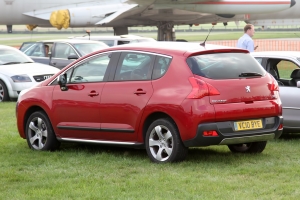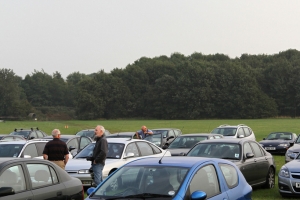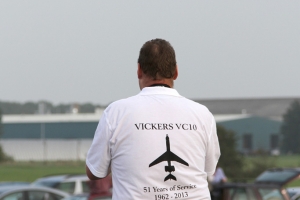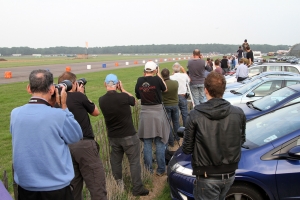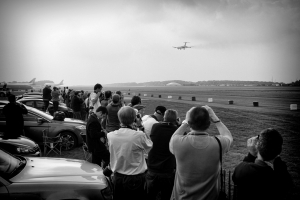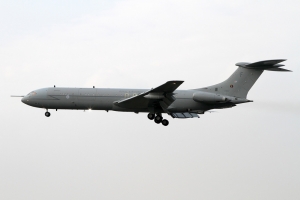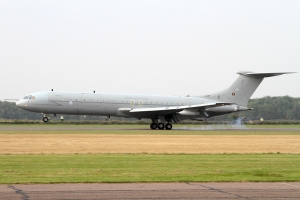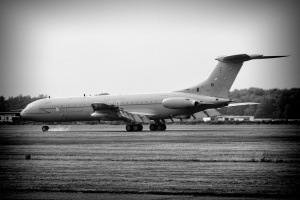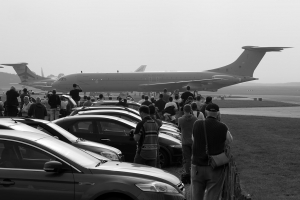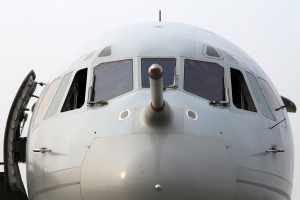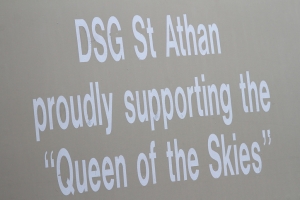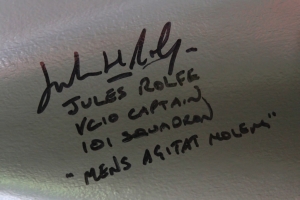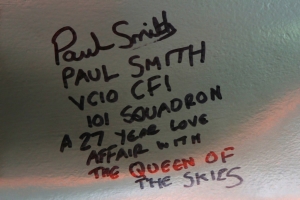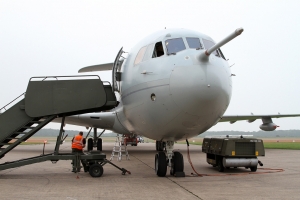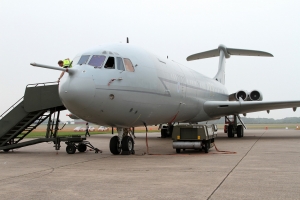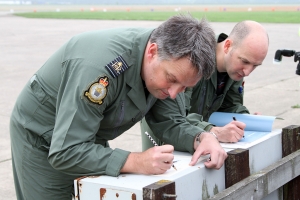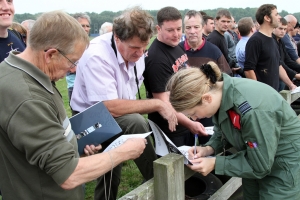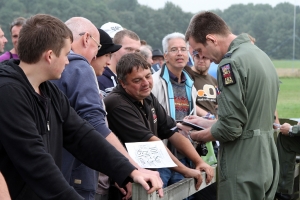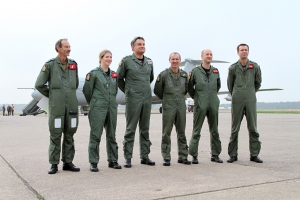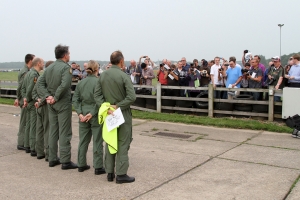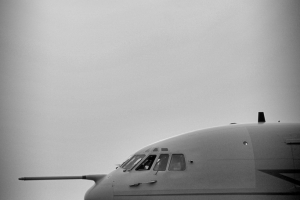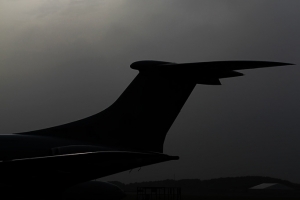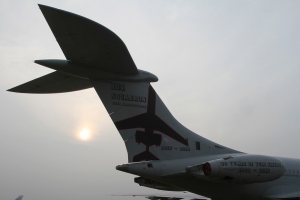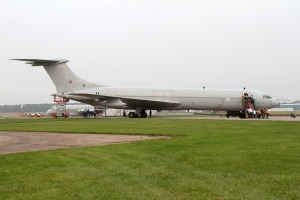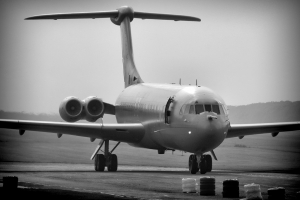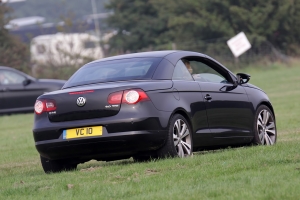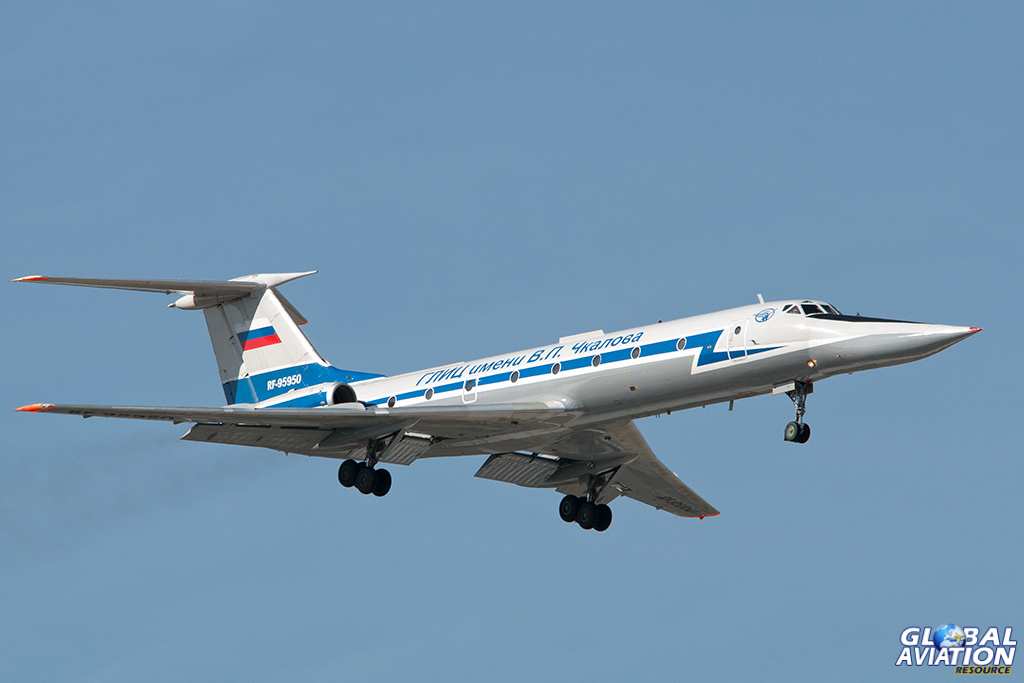Bruntingthorpe Aerodrome in Leicestershire played a significant part in British aviation history today when K3 model ZA147/F, the final Royal Air Force VC10, touched down somewhat later than scheduled at 1604 local after poor visibility at RAF Brize Norton, en-route and at Bruntingthorpe delayed the original departure time.

© Karl Drage – www.globalaviationresource.com
In doing so, ZA147 became not only the last Royal Air Force VC10 to land but also the last ever VC10 to land anywhere in the world, some 51 years after the type’s first flight way back on 29 June 1962.
Ascot 848 was the callsign adopted for the final flight, but it was obvious from a very early stage this morning that the planned 1030L departure could not be met due to heavy fog. A series of later times were posted and missed, but eventually word came through at Bruntingthorpe that things were looking good for a 1445L departure.

© Karl Drage – www.globalaviationresource.com
Having been home to the RAF’s VC10 fleet for so long, it was only fitting that the crew should perform two approaches at RAF Brize Norton before setting out on their rather more direct route to Bruntingthorpe – albeit via Birmingham International Airport – than had originally been planned.
Very kindly, the powers that be at Bruntingthorpe had decided to open the gates to the general public for this historic occasion, and the invitation was accepted gratefully by a sizeable and extremely appreciative crowd.

© Karl Drage – www.globalaviationresource.com
When she finally did emerge, ZA147 spent approximately 15 minutes in the circuit at Bruntingthorpe performing two missed approaches and go arounds that provided the assembled throng with two final opportunities to hear her Rolls-Royce Conway engines roar into life, smoking away in a manner that only engines of that era can.
All too soon, the final landing came, with the aircraft’s main bogies caressing the tarmac and leaving feint clouds of white smoke trailing in their wake. It was all over and an eerie silence descended across those present as she pirouetted on the runway before taking the taxiway that would ultimately lead to the last spot she would ever position herself under her own power.

© Karl Drage – www.globalaviationresource.com
While some exited rapidly, others hung around in the hope that they might be granted a closer look. They were to be rewarded as airfield owner Dave Walton invited those that remained to do just that.

© Karl Drage – www.globalaviationresource.com
Group Captain Steve Lushington is RAF Brize Norton’s current Station Commander and was aircraft captain for ZA147’s final flight. With around 3,500 hours on type, he has more experience of the VC10 than most:
“It was the first aircraft I flew when I joined the Air Force. I was a co-pilot on 101 Squadron, then a captain on 101 Squadron. After that I did various tours away from flying, then I was a flight commander, and then I had the privilege to go back and command 101 Squadron. To be the Station Commander is just great and caps a wonderful set of tours on the VC10. It’s not been a bad innings!”
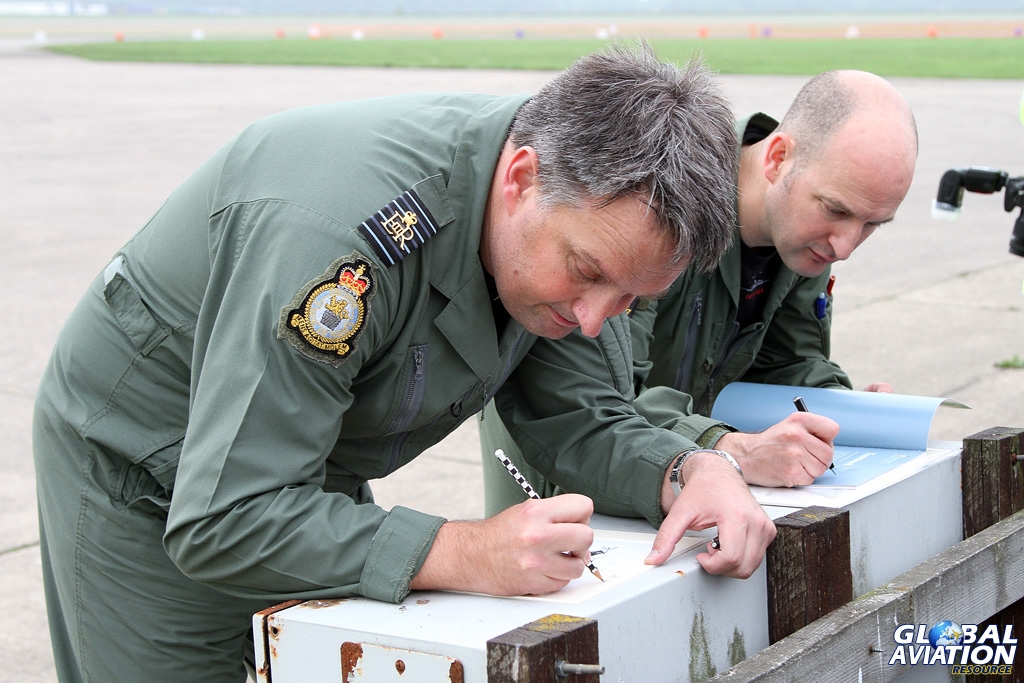
© Karl Drage – www.globalaviationresource.com
Clearly Gp Cpt Lushington has a strong affinity with the aircraft. Just what did it mean to be in charge of that last ever VC10 flight?
“It was wonderful – a real privilege. I know a lot of people will be saying today that it’s a bit sad, end of an era; it is but it should be a celebration of the VC10. It’s a wonderful aircraft – a real pilot’s aircraft – and it’s been in service with the (Royal) Air Force since 1966. Today’s been a very poignant day.”

© Karl Drage – www.globalaviationresource.com
VC10 and ultimately TriStar are being replaced in Royal Air Force service by the Voyager, an air-to-air refuelling capable version of the Airbus A330-200:
“Voyager is wonderful. It’s a worthy successor to the VC10 and the TriStar,” I couldn’t help but interject and point out that Voyager doesn’t have the same character as the VC10.
“Do you know what? Nothing will have the character of the VC10. It is just an iconic design and the sight of her shape in the skies over Brize Norton will be sadly missed.”

© Karl Drage – www.globalaviationresource.com
Keeping a 50-year old design in the skies requires a tremendous amount of work and Gp Cpt Lushington was keen to point out the incredible support that has enabled the RAF to do just that:
“So many people have been involved with the VC10 – it’s not just the aircrew; it’s the engineers, the industry partners – there are so many people that have helped to keep this wonderful aircraft flying. It’s a good day for reflection and to remember some good memories, but let’s not be too sad about it; this is a celebration.”

© Karl Drage – www.globalaviationresource.com
The remainder of the crew on-board ZA147 comprised: Sqn Ldr Cat Thompson (Navigator), Flt Lts Jules Rolfe (VC10 Captain) and Paul Smith (VC10 Chief Flying Instructor), MACR Trev Collet (Load Master) and Flt Sgt John Douglas (VC10 STANEVAL).
ZA147 had passed her 50,000th hour fairly recently whilst operating between the Falkland Islands and Ascension Island and has added a couple of hundred more to that total since. While she did need plenty of TLC in her later years, she remained remarkably reliable right up until the end.

© Karl Drage – www.globalaviationresource.com
As the media formalities were conducted, her adoring public continued to wait on patiently. Once again, they were rewarded as each of the crew members on that final flight took the time to meet the well-wishers, signing No. 101 Squadron memorabilia and posing for pictures in front of the aircraft.
The whole event was a great success for all those involved and demonstrated perfectly what can be achieved with a very willing and positive attitude. It was a great credit to all parties and helped to send the Vickers VC10 off in the manner she deserved.

© Karl Drage – www.globalaviationresource.com
Some degree of uncertainty appears to reign over precisely what happens next. The latest word on the grape vine suggests that XR808, “BOB”, will be dismantled and roaded to the RAF Museum at Cosford. It had been expected that this aircraft would remain at Bruntingthorpe and be maintained in a taxiable condition. It now appears that the most likely airframe that will fulfil this role is ZD241. Quite how it will all pan out will become clear in the coming weeks.
Whether you knew her as “Vickers’ Finest”, “The Queen of the Skies”, “The Vicky Ten” or “The Funbus”, the VC10 will be sadly missed. Rest easy, old girl. You’ve earned it.

© Karl Drage – www.globalaviationresource.com
Sincere thanks are extended to all that enabled the aircraft to bow out in such fitting style.


